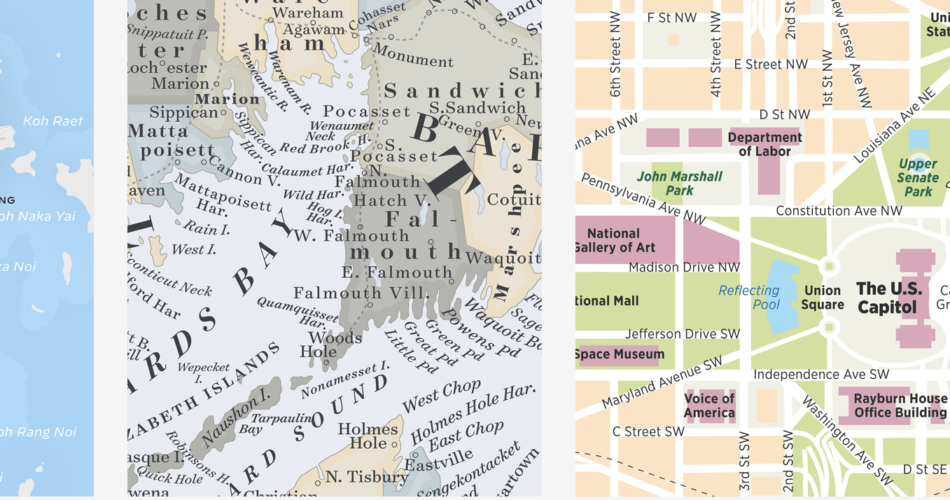Maps play a crucial role in visualizing geographical information and aiding navigation. They provide a means to represent complex data in a concise and easily understandable manner. While the choice of colors, symbols, and design elements greatly influences map legibility, the selection of appropriate fonts is equally important. Fonts in cartography serve as the vehicle for conveying information, enhancing readability, and imparting a distinctive aesthetic quality to maps.
The primary objective of choosing the right fonts for cartography is to ensure that the text on the map is clear and legible, allowing users to quickly interpret the information presented. Here are some key considerations when selecting fonts for cartographic purposes:
Legibility
The foremost consideration is legibility. Maps often contain a significant amount of text, including labels for cities, landmarks, roads, and other geographic features. Fonts must be easily readable at various scales, from small labels to larger titles and headings. Opt for fonts with clear, well-defined characters, balanced proportions, and appropriate spacing.
Hierarchy and Differentiation
Maps employ different text elements with varying degrees of importance. It’s crucial to establish a clear typographic hierarchy, differentiating between primary, secondary, and tertiary information. Titles and headings should stand out, while secondary labels and annotations should be easily distinguishable. Select fonts that offer distinct styles, weights, and sizes to create visual contrast.
Contextual Fit
Consider the context and purpose of the map. Fonts should align with the map’s theme, be it historical, modern, or thematic. A vintage-style map might benefit from serif fonts reminiscent of traditional typography, while a modern navigation app may require a clean and minimalist sans-serif font. The font choice should complement the overall design and evoke the desired atmosphere.
Typeface Versatility
Opt for fonts that offer a range of styles and weights to accommodate different elements and scales within the map. A versatile font family allows for consistency across various labels, while providing flexibility in adapting to different cartographic requirements. Ensure the chosen typeface includes variations such as bold, italic, and condensed styles for emphasis and visual hierarchy.
Multilingual Support
With the global reach of cartography, it’s essential to consider multilingual support. Fonts should cover a wide range of characters, including diacritics, symbols, and non-Latin scripts. This ensures that maps can effectively communicate information to diverse audiences without compromising legibility or visual coherence.
Compatibility with Map Backgrounds
Fonts should be compatible with different map backgrounds, including light and dark themes. Test the legibility of the font against various color schemes and ensure that it remains readable under different lighting conditions. Avoid fonts that may blend in with or be overwhelmed by the map’s background colors or patterns.
Scalability
Maps are viewed across a variety of devices and screen sizes, from large displays to mobile devices. Choose fonts that scale well without losing legibility or aesthetic quality. Pay attention to the font’s scalability, ensuring it remains clear and crisp when viewed at different sizes.
Remember, the purpose of font selection in cartography is not only to enhance readability but also to contribute to the overall visual appeal of the map. While prioritizing legibility, explore font options that align with the map’s intended style and aesthetics. Experiment with different combinations and layouts to strike a balance between clarity and visual impact.
In conclusion, fonts play a significant role in cartography, enabling effective communication of information and enhancing the overall map experience. By considering factors such as legibility, differentiation, contextual fit, typeface versatility, multilingual support, compatibility, and scalability, cartographers can select fonts that bring maps to life, making them both informative and visually appealing to users around the world.

